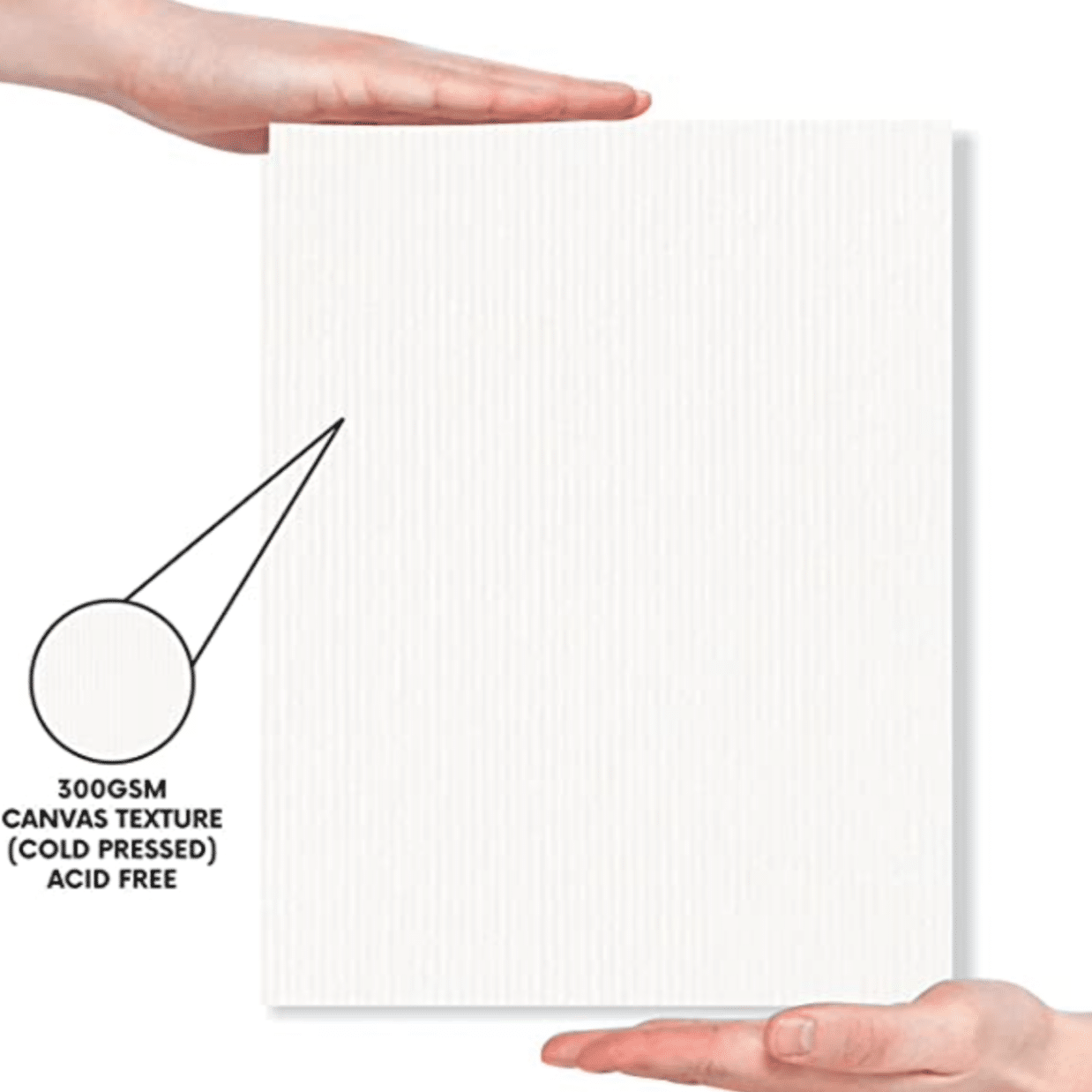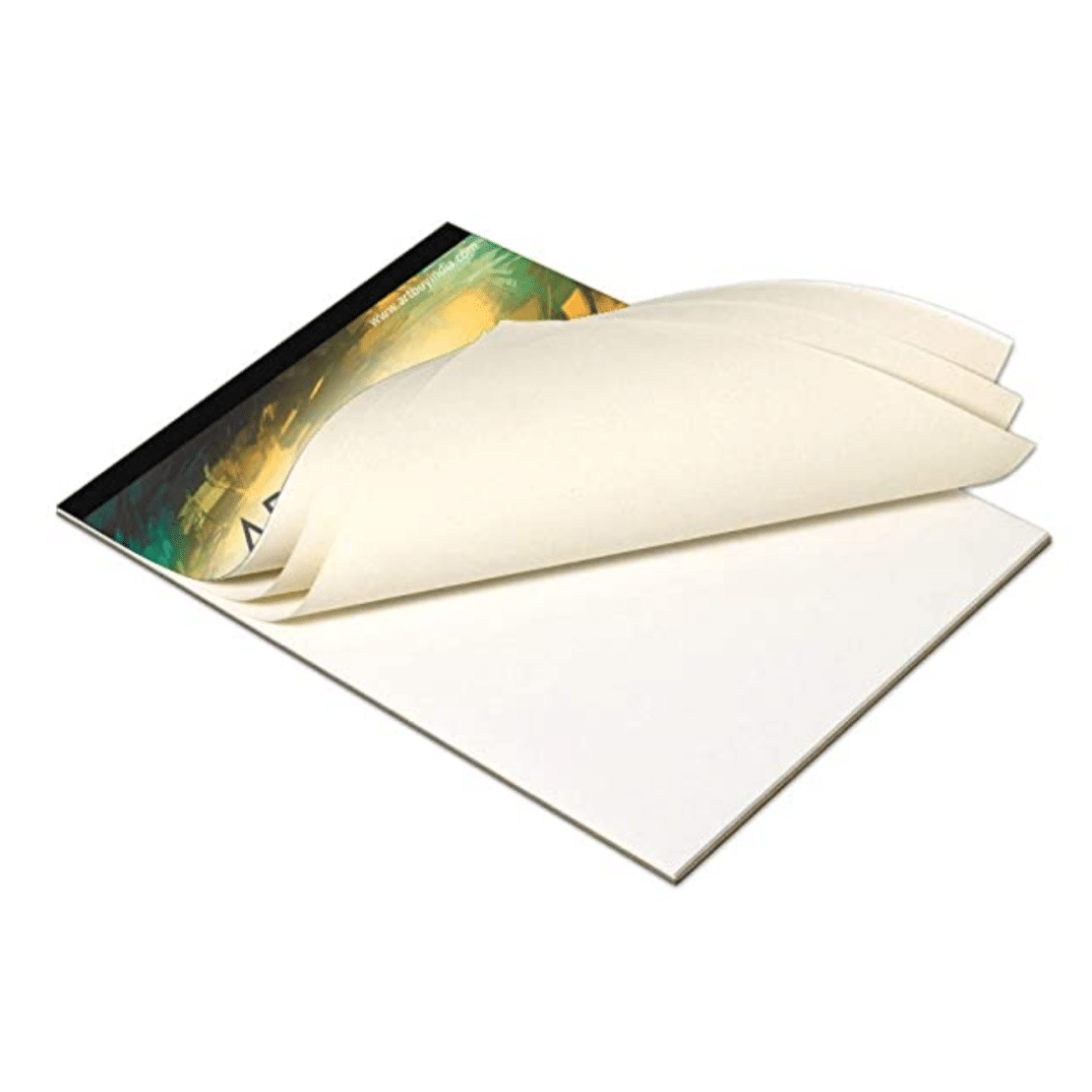my favorite art supplies
When I first entered the world of art in 2012 during my corporate career, I was like a little kid buying every art supplies in the art store. I was full of curiosity to buy every new item and explore them. As a result, I ended up with more supplies than I ever needed – some I used a lot and some never got touched! But in the process of this discovery, I learnt a lot and in this page I present to you the best of the art supplies you need to progress in your creative journey.
This post contains affiliate links, which means I may receive a small commission, at no cost to you, if you make a purchase through a link. And you can trust that I only share products I love. This helps to support my work so that I can continue to make valuable free content for you. Thank you for the support!
Bookmark this page because I update this page regularly if any of my supplies, or tools change!
Paper / Sketchbook / Canvas
Acrylic Paper
I’ve painted a lot in acrylic paper because they have really good textures to help acrylic color blending, almost like canvas textures. I don’t really have a favorite brand when it comes to acrylic papers.. I’ve listed some of my favorite ones in the amazon link below. I also love painting acrylic landscapes in watercolor papers because I love the paper textures and the way the painting looks after drying.
Sketchbooks
For daily art practice, my usual go-to is a A5 sketchbook. An acrylic sketchbook is preferred if you are just starting out because the quality of the paper ensures good blend of acrylic colors on the paper. So if you are a beginner, find a good brand in your country that creates quality paper sketchbooks (anything above 160 gsm is usually good).
I’ve painted in all sorts of sketchbooks, from good quality paper to average school notebooks, and never faced a problem because, after 10 years of practice, I know how to blend colors irrespective of the surface presented to me. But when I first started out in 2012, I remember feeling like a failure due to the quality of the sketchbook paper when I wasn’t capable of acrylic blending much. So if you are an absolute beginner, avoid sketchbooks.
These days I’m really enjoying painting in school notebooks for students which is somewhere around 60 gsm, really cheap and I can paint freely in them without the pressure of creating a masterpiece.
See all my sketchbook paintings here for idea!
Canvas
I started my acrylic painting journey with canvases. In 2012, there weren’t many options for acrylic paper or sketchbooks, or even if there were I wasn’t aware. So the only viable option for me was the canvas cloth. Canvas comes in 4 different varieties:
- Stretched canvas – The canvas is stretched across a wooden frame and is ready to hang
- Canvas panel – Canvas cloth is glued onto a stiff cardboard or mdf (cheaper than stretched canvases), comes in all sorts of sizes
- Canvas pad – Loose canvas cloth cut and stuck on one side. It’s like a loose acrylic paper but with canvas cloth texture.
- Canvas roll – This is probably the cheapest of all canvas options. They are usually 5 meters long rolled and comes in all different heights – 2/3/4/5 feet. If you want to save money, you can buy a roll and cut it in your desired size. You can cut and stretch it on a wooden frame to create stretched canvases or glue on a hard board to create canvas panels and keep them loose to create canvas pad. I bought a canvas roll of 10 meters x 72 inches 5 years back and I still have a lot left of it.
- All the products mentioned are listed in my amazon shelves. Click on the amazon link below to view and buy them!



Acrylic Brushes
When you go to an art store or search online, you will find so many different options for brushes.. and it is very easy to get overwhelmed not knowing which one to pick. And overwhelm leads to indecision and can quickly take us out of the creative zone. Thankfully when I first started painting, there weren’t as many options as there are today. I remember buying a set of brushes that had flat and round ones. And I’ve painted much of my artwork for about 8 years using just flat and round brushes (different sizes). It is only after 2020 that I started using Filbert brushes for its round edges, and liner brushes for detail works. So I’d suggest not to get lost trying to use all different types of brushes, find out the ones you feel good painting with and stick to them.
If you are just starting out – buy an acrylic paint brush mix set, try them all out, and see the ones you feel good painting with! There are many inexpensive mixed brush sets available in the market. So just pick any according to your budget.
My recommendation: Buy a set of flat brushes, round brushes & filbert brushes and you are good to go. Each of these sets comes with various sizes to choose from, depending on the canvas size. If you like doing a lot of detail work, then you can buy a set of liner brushes as well, but the smallest one from the round brush set is also as good as a liner brush.
For working on big canvases like 3×3 ft or 4×4 feet, I use a 2-inch thick flat brush. I’ve also used inexpensive hardware paintbrushes for painting big canvases. I was never a brand person and so don’t have any preference for brush brands. There are some really nice and expensive brushes out there and I’ve tried a few, but my paintings didn’t turn out any different depending on whether I used a cheap brush or an expensive brush 😉 So the decision is yours, whether you want to buy a regular brush or an expensive branded brush!
- All the products mentioned are listed in my amazon shelves. Click on the amazon link below to view and buy them!



Acrylic Paints
I think color is the trickiest thing when you are just getting started. The paint companies have created all sorts of color shades to decorate the paint aisle and to tempt artists like us, who don’t have knowledge of color theory. As a beginner, I went to the art store and bought all sorts of colors to create my artworks, not knowing how I can create those shades.
That was before I had understood color theory. Now I know the theory, the formula, and the recipe to create all colors (other than the primaries of course). I still do buy some of the secondary and earth colors for easy use, but if I have to create them, I can easily do so from the primary colors. And I’m going to help you get there!
As a beginner, to start with, buy a set of 12 colors from any brand. Just make sure it is an artist-grade color and not a student grade. In India, Camlin is a very good brand to start with. Understand the color theory and learn to create your own colors. After that buy any specific color that you use the most, to help save time and energy in the process of creating. But once you have the knowledge of color mixing, you will develop a color confidence that will reflect in your artwork and you will also not look perplexed at the color aisle.
The brands that I’ve used and loved are Liquitex Basics, Windsor & Newton, and Camlin. I do not find much difference in color quality and I feel when you have the color confidence, you can pick any brand and any color and make it your own.
- All the products mentioned are listed in my amazon shelves. Click on the amazon link below to view and buy them!



What's in my acrylic color palette?
The 3 primaries are all you need to create any artwork, because all the other colors can be created from these 3. And amongst the primaries, there can be a cool and a warm one (refer to Color Temperature module in my color theory class).
The first set of paint is all I need to create any painting, but I do keep some secondaries and earth colors for easy color mixing. The below chart shows the color palette that I commonly have while painting!

Color Mixing Charts
By mixing the 2 primary blues and 2 primary yellows, you can create as many different greens!




